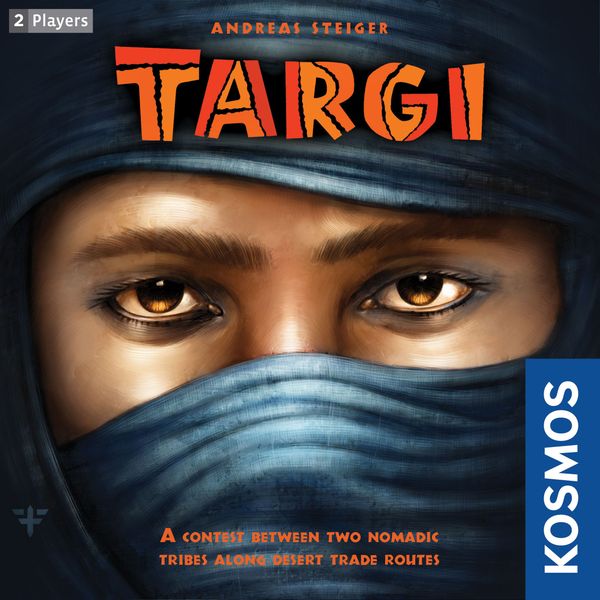Targi (2012) Board Game
Targi is a two-player board game released in 2012 by designer Andreas Steiger and published by KOSMOS. The game is set in an Arabian theme, where players take on the roles of Tuareg tribes in the Sahara desert, navigating the modular board to collect resources and outwit their opponent.
Game Components of Targi
How To Setup Targi
To set up Targi, start by constructing the central grid with the 16 border cards, which always maintain the same order. Shuffle the Tribe cards and Goods cards into separate decks. Place a Goods card face-up in each corner and the center of the grid, and fill the remaining spaces with Tribe cards. Each player receives 3 Targi, 2 Tribe markers, 4 VP tokens, 1 coin, and 2 of each resource. The robber token is placed next to the ‘Noble’ border card. A start player is selected and given the start player token.
Gameplay Mechanics and Game Objective
Player Experience
Targi offers a deeply strategic and interactive experience, particularly suited for two players. The game is characterized by its precise and fragile system of intersections, where every meeple placement reveals critical information about a player’s strategy. Players must balance between achieving their goals and preventing their opponent from doing the same, creating a constant tension and need for strategic thinking. The game’s design ensures that each decision feels weighted by consequence, making it engaging and challenging.
Pros
Cons
Personal Thoughts on Targi
Targi is ideal for players who enjoy strategic games with high interactivity and a competitive edge. It is particularly suited for those who appreciate the challenge of worker placement games and the nuances of blocking and outmaneuvering an opponent. While it may not be the best fit for players who prefer shorter, less complex games, Targi offers a rewarding experience for those willing to delve into its intricate mechanics.
We are supported by our audience. When you purchase through links on our site, we may earn an affiliate commission, at no extra cost for you. Learn more.

